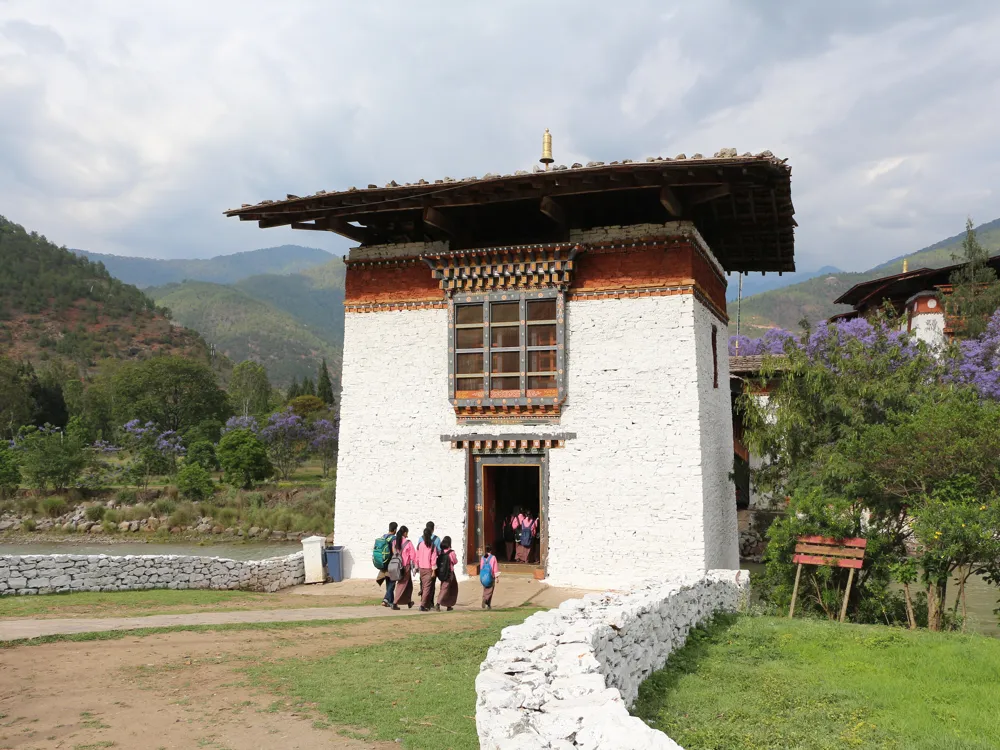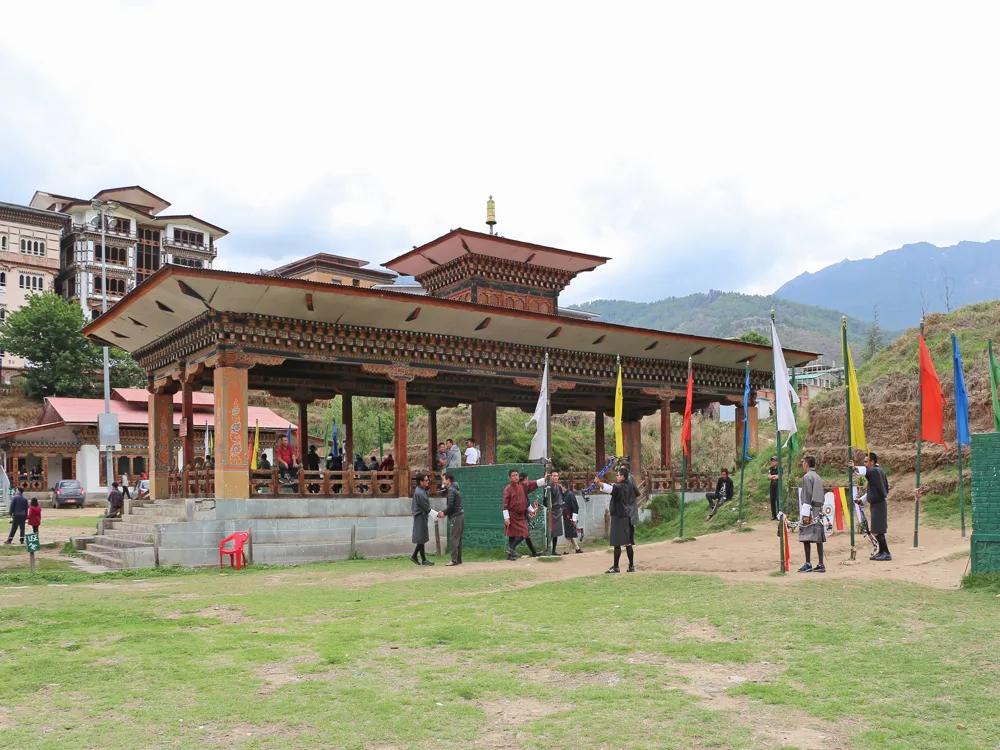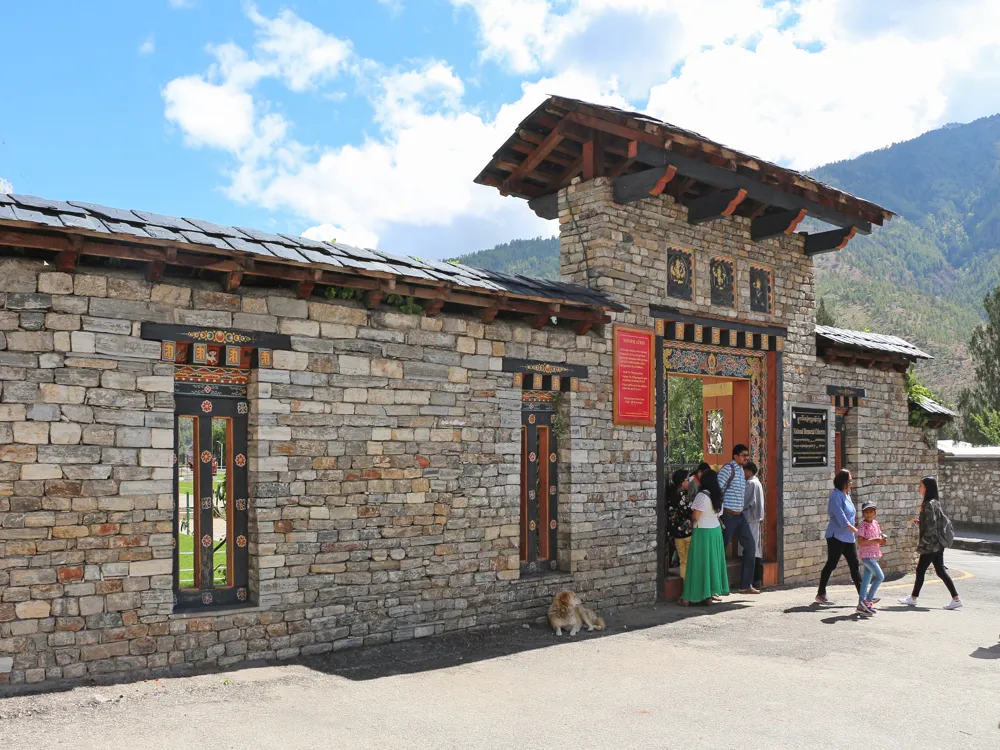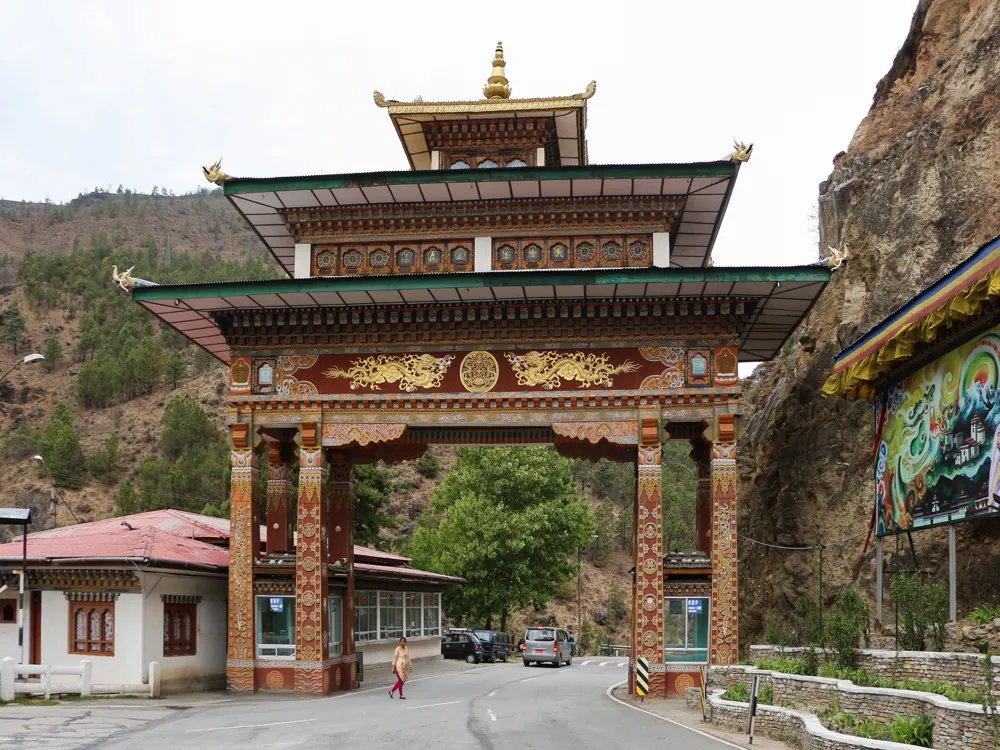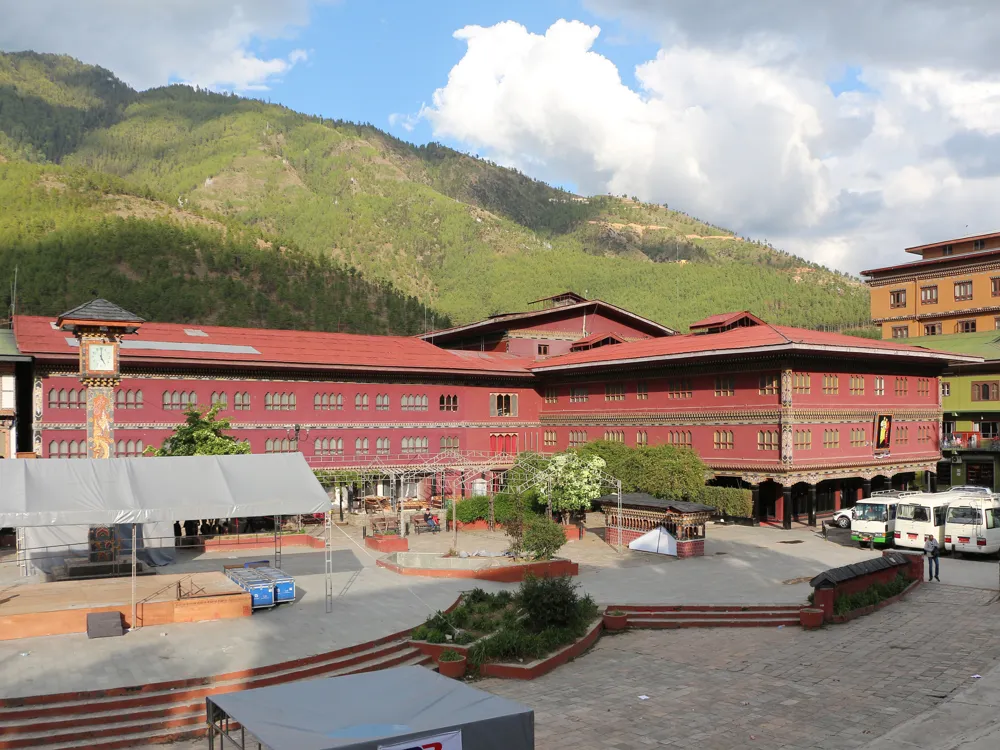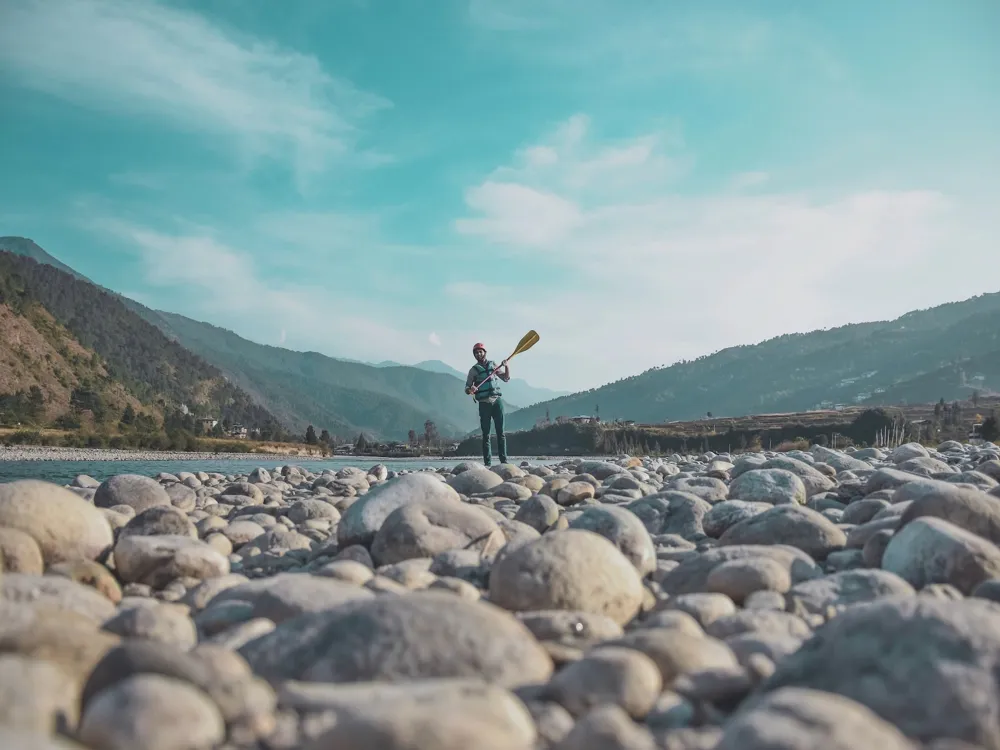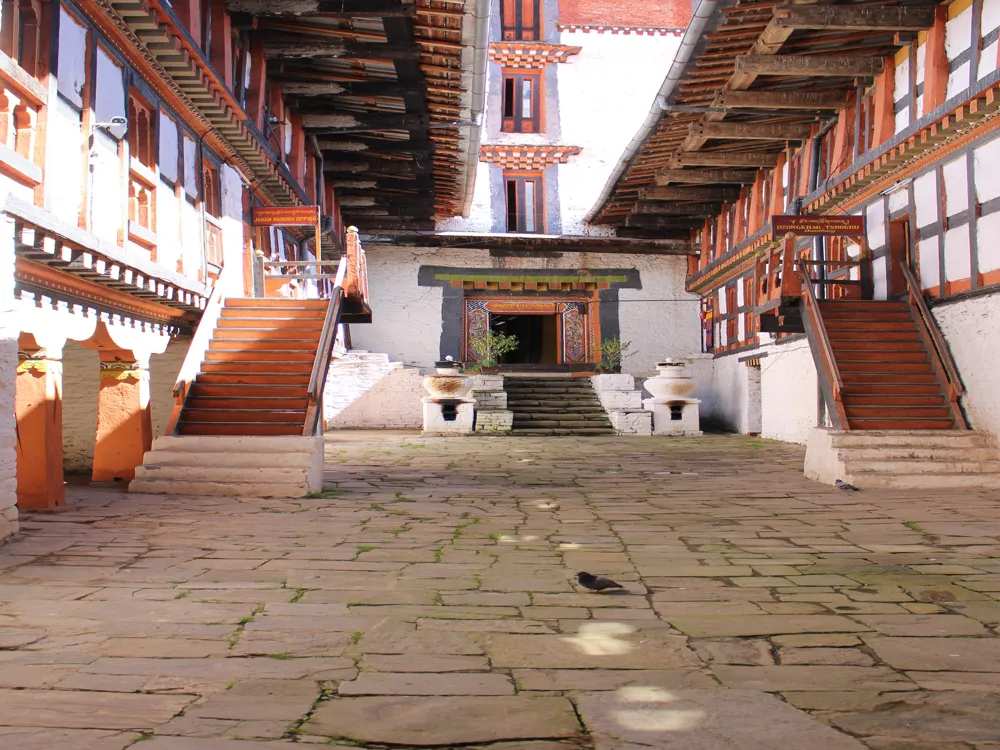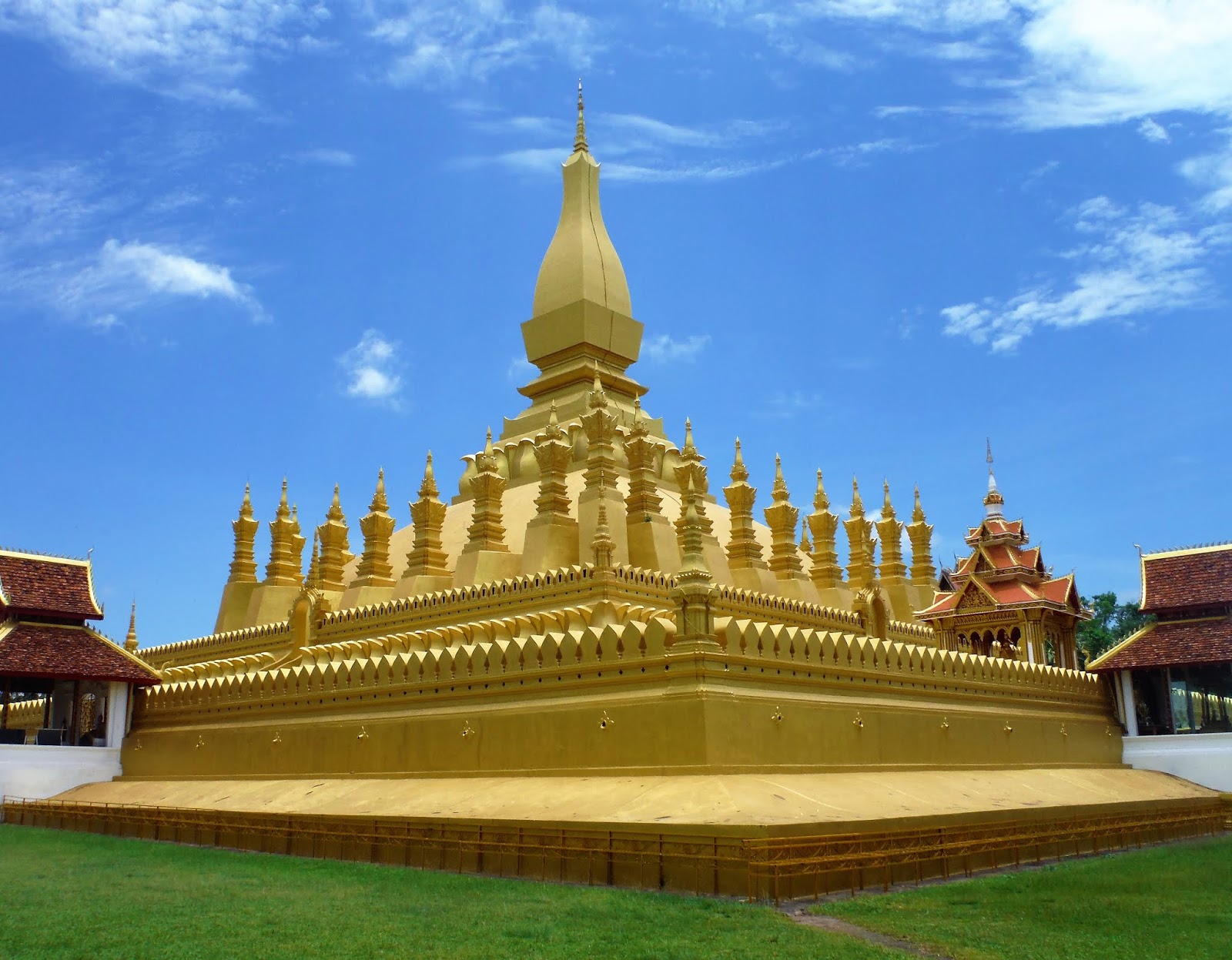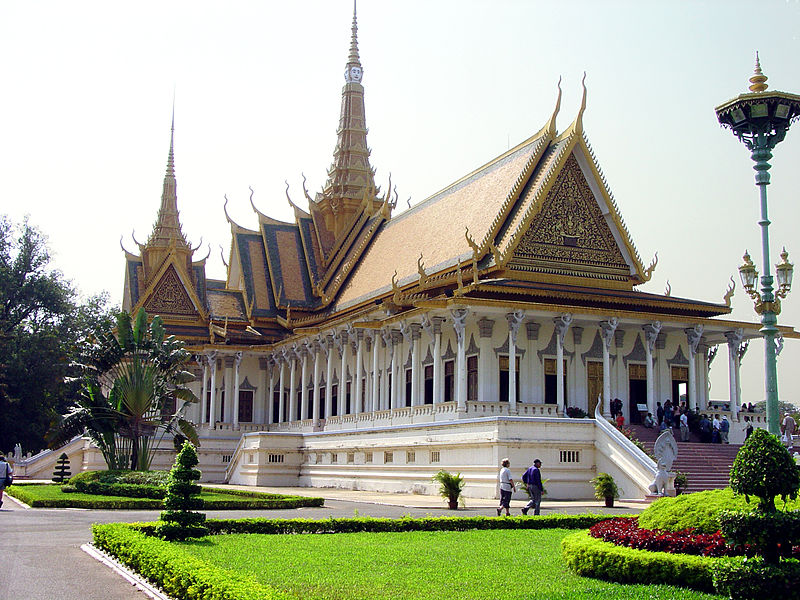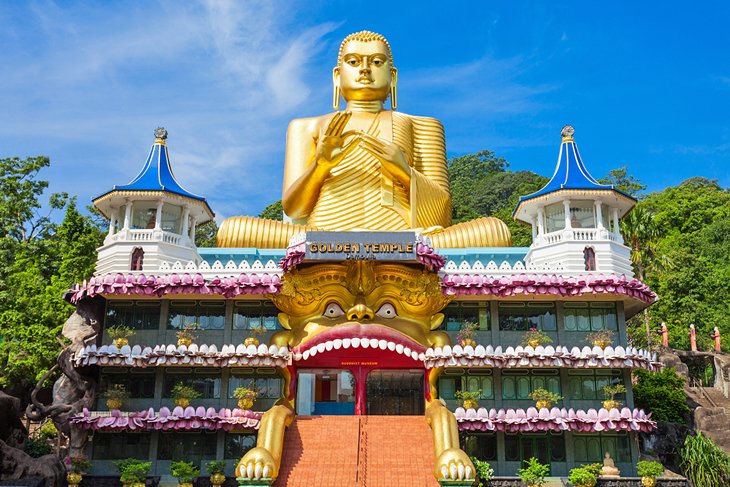Plan Your Travel To Bhutan
Bhutan Travel Essentials
Ideal Duration: 6 - 8 days
Currency: Bhutanese Ngultrum (BTN)
Best Time: March to May, September to November Read More
Budget: Cheap
"The Happiest Country in the World"
Bhutan Tourism
The Himalayan nation of Bhutan is known for its calm beauty, historic culture, and commitment to environmental preservation. With its numerous monasteries and treasured customs, the capital city of Thimphu provides an insight into Bhutanese culture. Discover the lush Paro Valley and the famous Tiger's Nest Monastery, which is positioned on a cliff. Trekkers will find themselves in a playground of pure mountains, verdant forests, and a plethora of animals in Bhutan. Buddhism is a major part of Bhutanese culture, and customary celebrations like the Paro Tsechu provide insight into the country's spiritual past. Bhutan welcomes visitors to immerse themselves in its tranquil surroundings and enjoy its distinctive way of life, all while demonstrating its warm hospitality and dedication to Gross National Happiness.
Must Know Before You Travel to Bhutan
- Visa: Tourists need a visa to enter Bhutan, which must be arranged through a licenced Bhutanese tour operator.
- Minimum Daily Package: Bhutan has a minimum daily package, which covers your accommodation, meals, and a guide. This is designed to promote sustainable tourism.
- Respect for Culture: Bhutan is deeply rooted in its culture and traditions. Dress modestly, remove hats in religious places, and ask before taking photos of people.
- Altitude: Many places in Bhutan are at high altitudes, so acclimatise gradually to avoid altitude sickness.
- Language: The official language is Dzongkha, but English is widely spoken.
- Money: The currency is the Bhutanese Ngultrum (BTN), and Indian rupees are also accepted.
- Entry Requirements: Bhutan has a unique entry process. Tourists must arrange their visit through an authorised tour operator, and a daily fee is applicable, covering accommodation, meals, transportation, and a guide.
- Visa Information: Although visas are issued by Bhutan, they are handled as part of the travel package by the tour operator.Make sure you plan well in advance and coordinate with your chosen tour operator.
- Respect Local Culture: Bhutan places high importance on its cultural heritage. Respect local customs and traditions, and dress modestly, especially when visiting religious sites and monasteries.
- Environment Preservation: Bhutan is committed to environmental conservation. Do your part by avoiding littering, respecting nature, and following designated trails during hikes.
- Altitude Considerations: Bhutan has varying altitudes, and some areas may be at high elevations. Take precautions to acclimatise, stay hydrated, and be aware of altitude-related symptoms.
- Currency and ATMs: Bhutan’s official currency is the Ngultrum (BTN). While Indian rupees are widely accepted, it's advisable to carry Ngultrums. ATMs are available in major towns.
- Photography Rules: Ask for permission before taking photographs, especially of people, religious ceremonies, or inside monasteries. Some areas may have restrictions on photography.
- Weather Awareness: Bhutan experiences diverse weather conditions. Be prepared for varying temperatures, especially in mountainous regions. Check the weather forecast before your trip.
- Tipping Culture: Tipping is not common in Bhutan, but it's appreciated. If you feel the service deserves it, a modest tip is a polite gesture.
- Transportation: Road travel is the primary mode of transportation. The roads may be winding and challenging, so be prepared for some adventurous journeys.
- Internet and Connectivity: Internet access may be limited in remote areas. Have a local SIM card for better connectivity and communication.
- Treks and Hikes: Bhutan offers stunning trekking opportunities. If you plan to trek, be physically prepared and follow safety guidelines.
Tourist Places to Visit In Bhutan
Paro
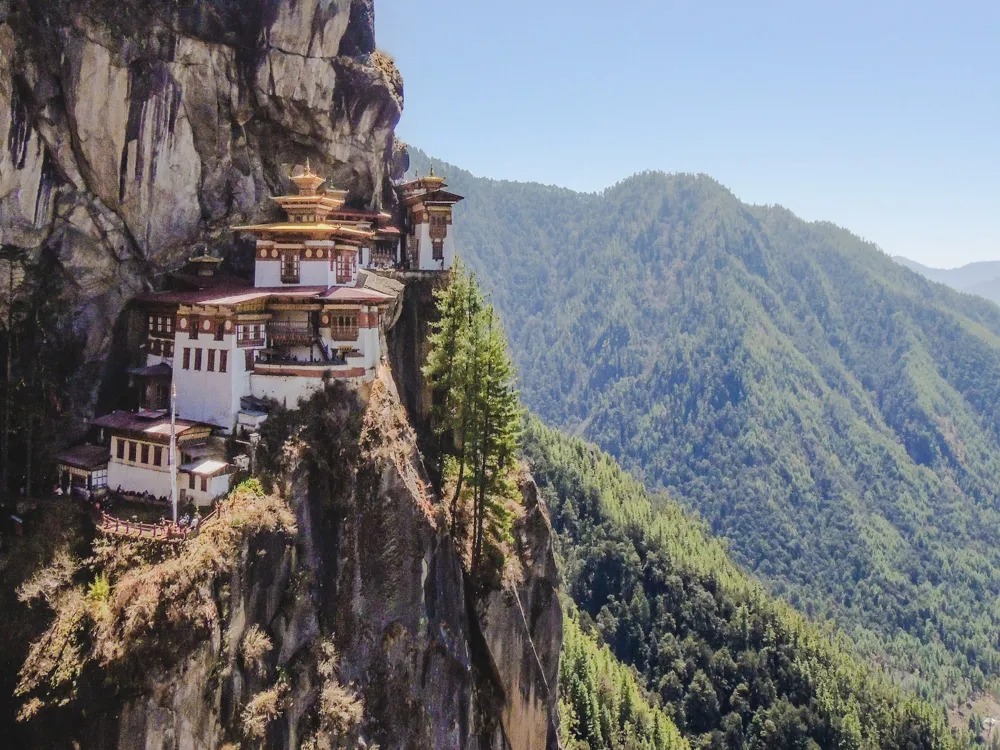
Thimphu
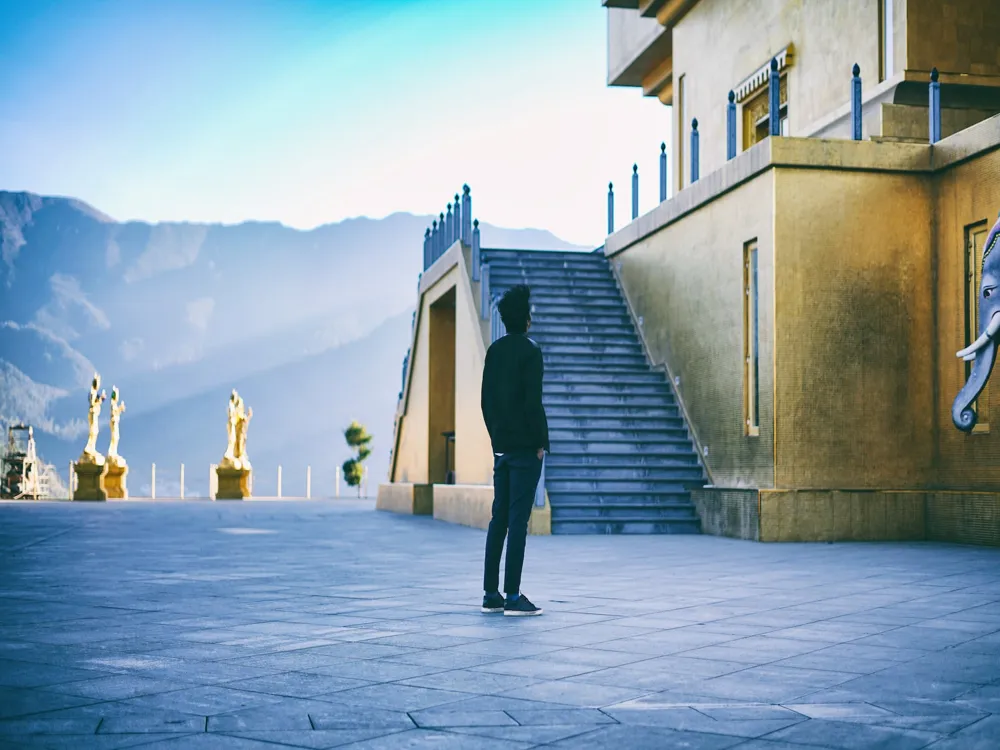
Haa Valley
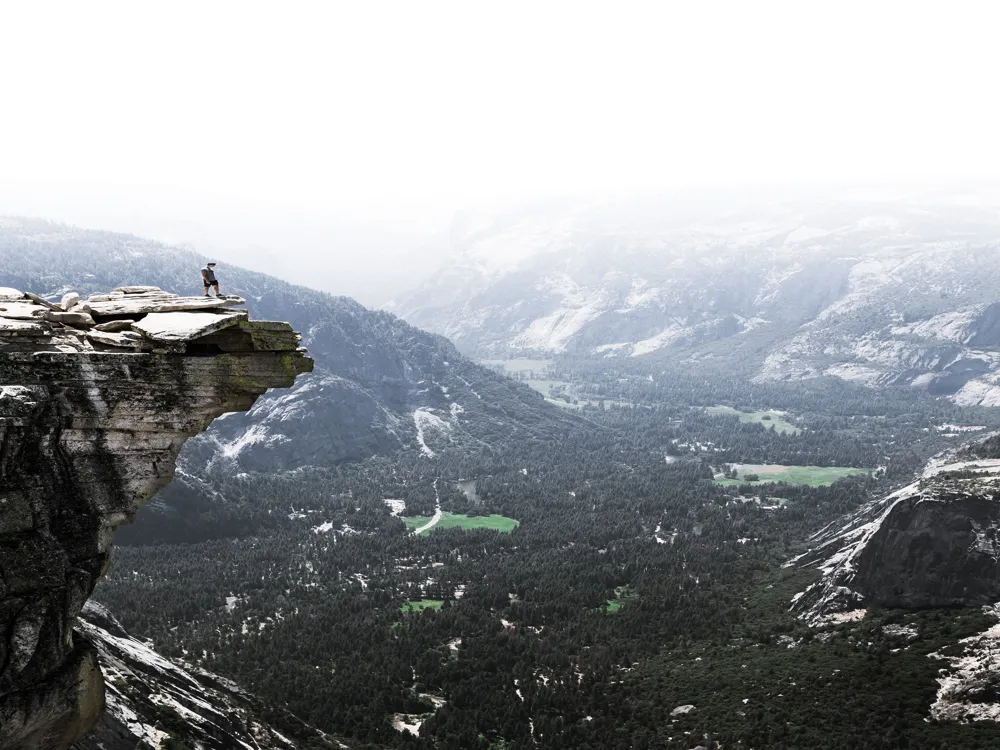
Bumthang
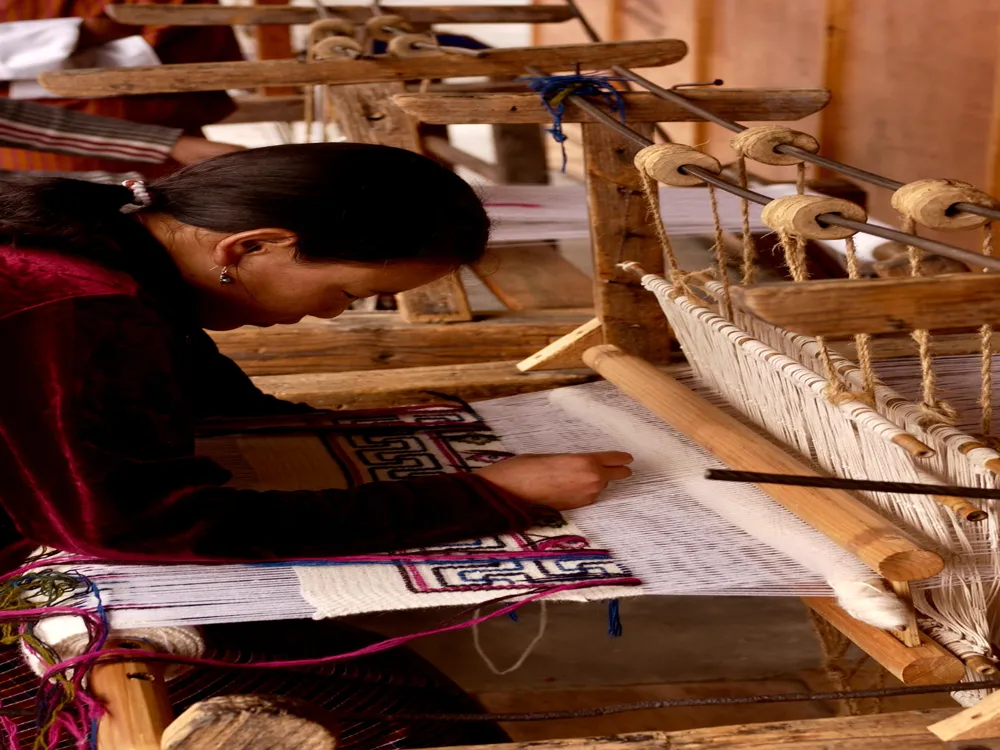
Bhutan Travel Packages
Compare quotes from upto 3 travel agents for free
View All Packages For Bhutan
More on Bhutan Travel
All collections about Bhutan
Best time to visit Bhutan
The finest seasons to visit Bhutan are from March to May in the spring and from September to November in the fall. The gorgeous and delightful springtime weather lasts from March to May. The country is brilliantly scenic, and the flowers are in full bloom. The nation also holds a number of springtime celebrations, including the Paro and Punakha Tshechu. However, autumn, which lasts from September to November, also has pleasant weather. Bhutan is susceptible to wide variations in climate and altitude because of its position. There are five different seasons in it: spring, summer, autumn, and winter. Summertime temperatures in June through August range from 24 to 25 degrees Celsius. The southwest monsoons arrive in July and relieve the heat, but if you're going sightseeing, you'll need to pack a raincoat. Similarly, the northeast monsoons cast their influence throughout the winter months of December through February. When the temperatures are at their lowest, in late January and early February, snowfall is anticipated. The country is brilliantly scenic, and the flowers are in full bloom. The nation also holds a number of springtime celebrations, including the Paro and Punakha Tshechu. However, autumn, which lasts from September to November, also has pleasant weather. Bhutan is vulnerable to wide variations in climate and altitude because of its position. There are five different seasons in it: spring, summer, autumn, and winter. Summertime temperatures in June through August range from 24 to 25 degrees Celsius. The southwest monsoons arrive in July and relieve the heat, but if you're going sightseeing, you'll need to pack a raincoat. Similarly, the northeast monsoons cast their influence throughout the winter months of December through February. When the temperatures are at their lowest, in late January and early February, snowfall is anticipated.
Read More on Bhutan Travel
Exchanging money in Bhutan:
It's important to be ready for Bhutan's peculiar monetary situation before visiting. Ngultrum (BTN), the currency of Bhutan, is not commonly accessible outside of the nation. It is recommended that visitors exchange their foreign cash for Ngultrum at the airports in Paro or Thimphu, as well as at neighbourhood banks. Although acceptance of credit cards is growing, for smaller purchases, cash still reigns supreme. There are ATMs as well, although they are more common in cities. Make sure you have adequate cash on hand, particularly if you want to go to isolated areas where there might not be many card facilities.
Nightlife in Bhutan:
The nightlife of Bhutan is very different from that of the West. There aren't many late-night party scenes in the nation because of its conservative culture. There are a few pubs and clubs in Thimphu and Paro that close early. The majority of Bhutanese people love local get-togethers, traditional music, and dance performances on calmer evenings. There are possibilities for stargazing under the calm night skies, and some posh hotels may feature comfortable lounges for an evening of relaxation. Bhutan is a place to lose yourself in the serene grandeur of the Himalayas, even if it's not a popular destination for nightlife.
Shopping in Bhutan:
Bhutan provides a distinctive shopping experience emphasising traditional culture and craftsmanship. You should definitely check out Thimphu's weekend market, which offers organic fruit, handicrafts, and textiles made locally. Handmade paper goods, exquisitely woven carpets, and thangka paintings are among the many Bhutanese specialties that make wonderful mementos. In addition, Thimphu and Paro are home to a large number of boutiques that sell a variety of fine, regionally produced goods. Prices are set, so be prepared to invest in these unique jewels and admire the workmanship since bargaining is not typical.
Festivals in Bhutan:
Bhutan is well known for its colourful and profoundly spiritual celebrations. The most well-known is the Tsechu, a religious celebration held annually in each region. These celebrations, which attract both residents and visitors, feature intricate mask dances, traditional music, and religious rites. Two of the most well-known Tsechus are Paro and Thimphu. In addition, the Paro Tshechu offers a unique cultural and ecological experience because it falls in conjunction with the amazing Paro Taktsang (Tiger's Nest) walk. Festivals provide visitors with a genuine look into Bhutanese customs and a chance to get in touch with the spirituality and culture of the area.
Hygiene in Bhutan:
Although Bhutan has a comparatively high degree of cleanliness, visitors should nevertheless use caution to protect their health. While tap water in cities is usually safe to drink, it's best to use bottled water, particularly in more isolated places. Even if street food tastes great, choose your restaurants carefully to prevent gastrointestinal problems. Bring necessities like tissues and hand sanitizer because public facilities might not always be up to Western standards. Maintaining Bhutan's unspoiled beauty requires adopting the country's clean environment and polite local customs.
Tips for visiting Bhutan:
• Travelling to Bhutan is a unique experience that requires advance preparation. Make sure you get a visa before you travel by using a tour operator that has been approved.
• Respect religious places, dress modestly, and take off your shoes while visiting houses and temples to fully embrace the local customs.
• Interact with Bhutanese people to learn more about their customs and culture.
• Take advantage of the hiking options and beautiful scenery, but keep environmental protection in mind.With its "Gross National Happiness" concept, Bhutan is a unique Himalayan country. Therefore, go into your visit with an open mind and a desire to learn.
Foods of Bhutan:
The food of Bhutan is a delectable fusion of spices, chiles, and unusual ingredients. "Ema Datshi," a hot stew made with cheese and chilli, is the national cuisine. A basic meal, red rice is typically eaten with dried beef or pork with radish, or "Phaksha Paa" or "Shakam Paa." Popular snacks include momos (dumplings) and traditional fare like "Ara" (locally produced spirits) and "Suja" (butter tea). The food in Bhutan tends to be spicy, so be ready for bold tastes. Even though there is foreign food accessible in cities, sampling the regional cuisine is a must when visiting Bhutan.
Photos of Bhutan
All Country Photos Bhutan
Popular Questions And Answers on Bhutan
What is Bhutan known for?
Bhutan is known for its stunning Himalayan landscapes, unique culture, and its commitment to Gross National Happiness (GNH) as a measure of well-being.
Is Bhutan a safe country to visit?
Yes, Bhutan is considered one of the safest countries in the world for travelers. The crime rate is low, and the people are welcoming and friendly.
Do I need a visa to visit Bhutan?
Yes, tourists need a visa to visit Bhutan. You can only enter the country through authorized tour operators, and they will help you obtain the necessary visa.
What is the best time to visit Bhutan?
The best time to visit Bhutan is during the spring (March to May) and autumn (September to November) when the weather is pleasant, and the landscapes are at their most beautiful.
How can I experience Bhutan's culture?
To experience Bhutan's culture, you can visit dzongs (fortresses), monasteries, and attend local festivals. Interacting with the friendly locals is also a great way to immerse yourself in their culture.
What are the must-see attractions in Bhutan?
Some must-see attractions in Bhutan include the Tiger's Nest Monastery, Punakha Dzong, Paro Valley, Thimphu, and the annual Paro Tsechu festival.
What is Gross National Happiness (GNH)?
GNH is a unique development philosophy in Bhutan that focuses on the overall well-being and happiness of its citizens. It takes into account factors like psychological well-being, health, education, and cultural diversity.
Can I go trekking in Bhutan?
Yes, Bhutan offers some of the most beautiful treks in the Himalayas. The Jomolhari Trek and Druk Path Trek are popular choices for trekkers.
What is the traditional food of Bhutan?
The traditional Bhutanese food includes dishes like Ema Datshi (chili and cheese stew), Phaksha Paa (pork with spicy sauce), and momo (dumplings). Butter tea (suja) is a common beverage.
Is Bhutan an expensive destination?
Bhutan is not a budget travel destination, as it has a daily tariff that includes accommodation, meals, and a guide. However, the experience of visiting this unique country is considered well worth the cost.

